Optimizing Oil Recovery: A Sector Model Study of CO₂-Water-Alternating-Gas and Continuous Injection Technologies
Abstract
1. Introduction
2. Materials and Methods
2.1. Properties of the Sector Model
2.2. Reservoir Porosity
2.3. Reservoir Permeability
2.4. Reservoir Porosity, Permeability, and Thickness Statistical Analysis
- Porosity: Measured using helium porosimetry and log-derived porosity data. The porosity values in the sector model range from 0.070 to 0.091, with the highest porosity (0.091) recorded in layer 20.
- Permeability: Determined from core flooding experiments and well-test data. The permeability values range from 1 mD to 70 mD, with variations corresponding to different geological layers. Layers 20 and 22 exhibit the highest permeability.
- Relative Permeability and Capillary Pressure (Figure 6, Figure 7, Figure 8, Figure 9 and Figure 10): These were obtained through laboratory special core analysis (SCAL) tests on representative core samples from the field. The curves were incorporated into the compositional reservoir simulator to model fluid flow accurately.


2.5. Relative Permeability Curves
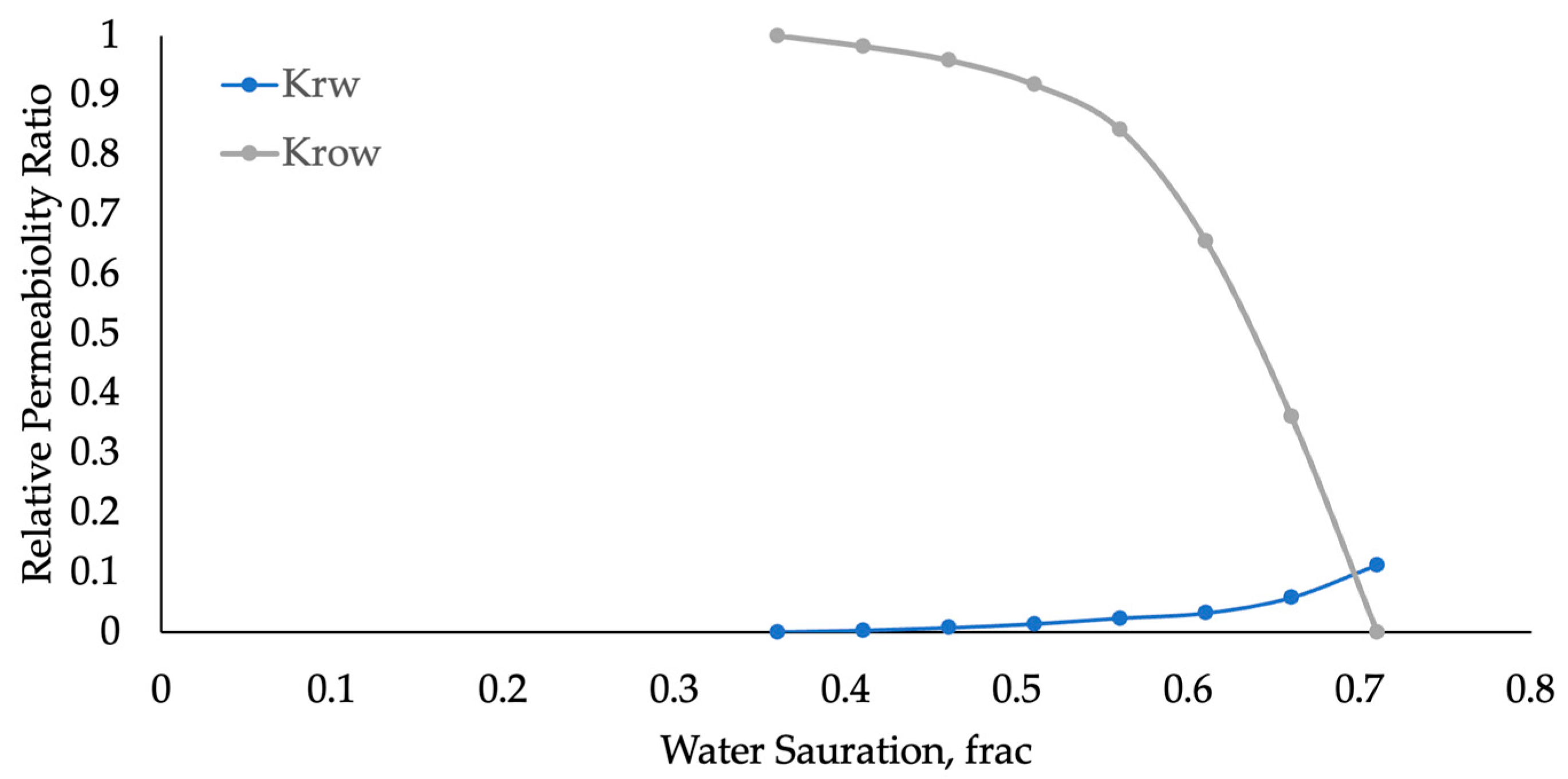
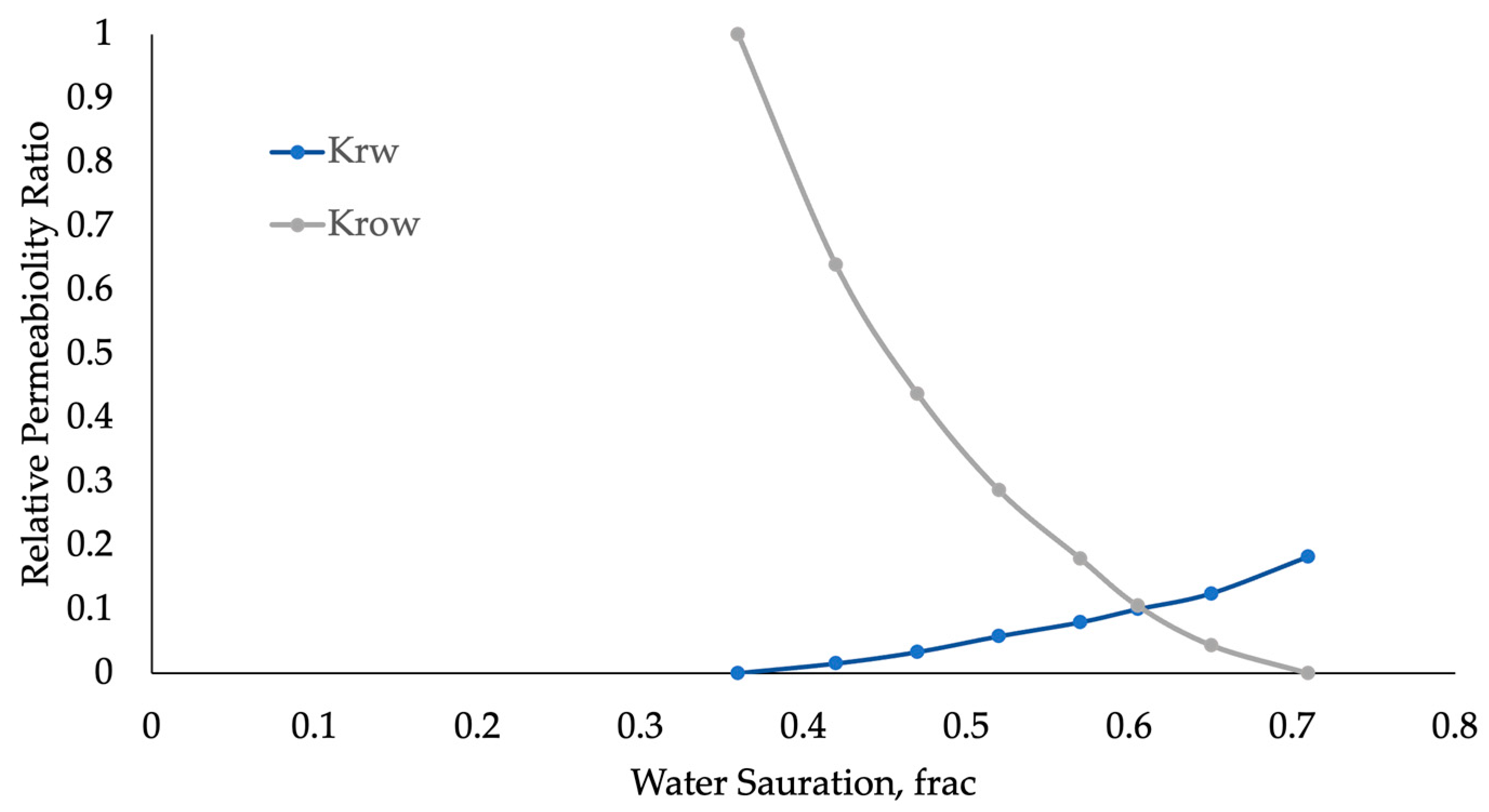
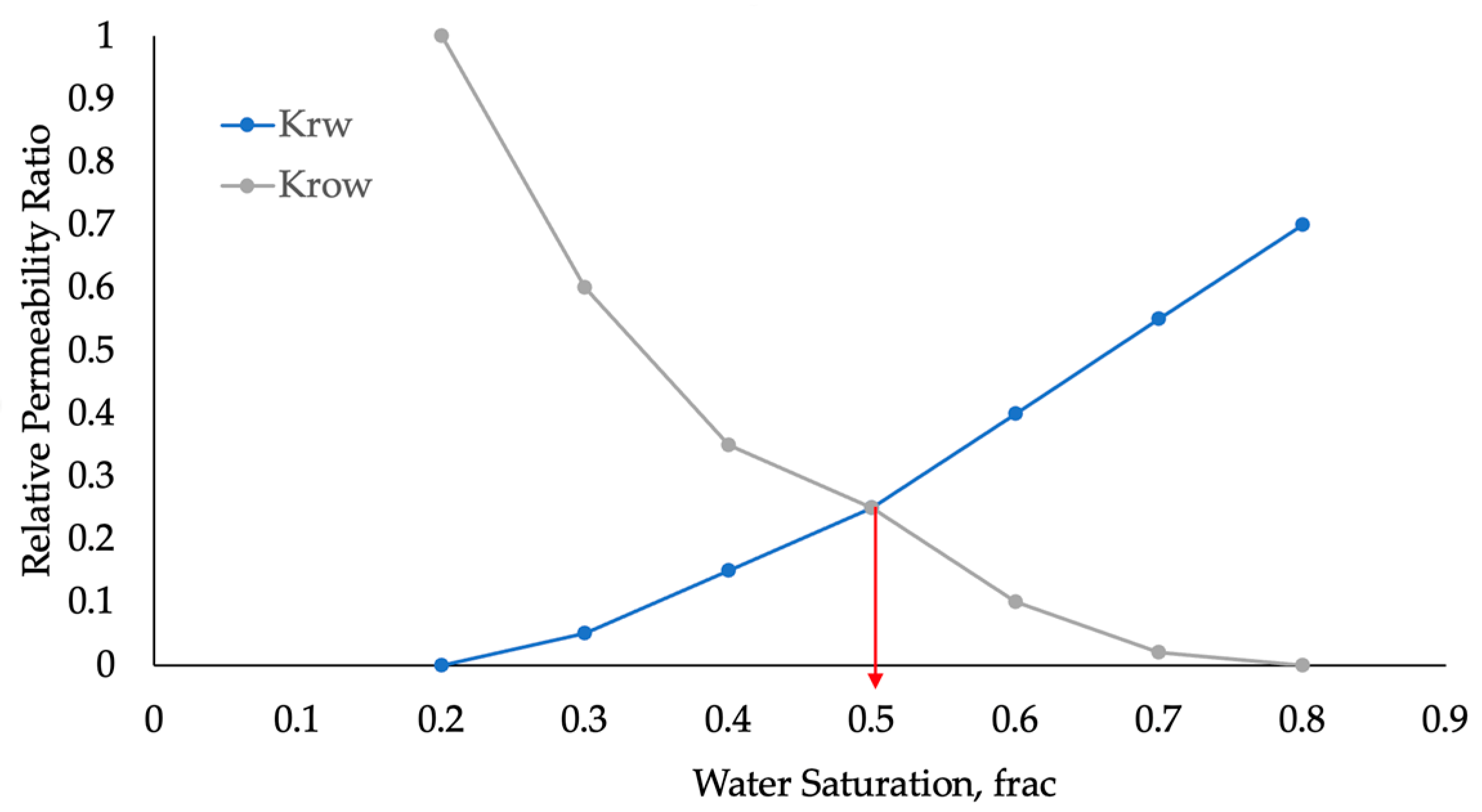
2.6. Capillary Pressure Curves
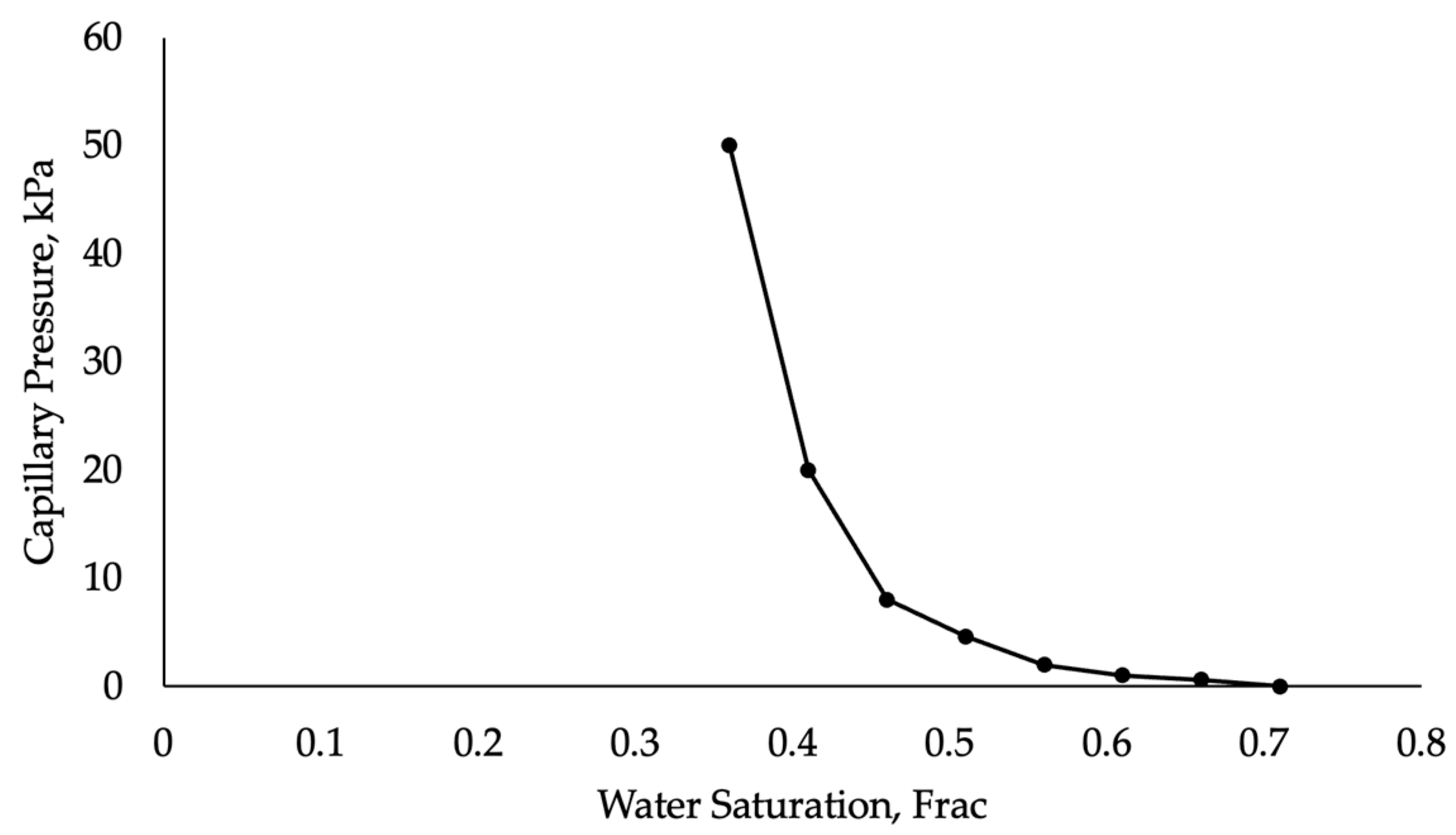

3. Results and Discussion
3.1. CO2-WAG Recovery Technique
3.2. WAG Performance in Comparison with Waterflood and CO2 Flood in the Water-Wet System
3.3. WAG Performance in Comparison with Waterflood and CO2 Flood in Mixed-Wet System
4. Conclusions
- Continuous CO2 injection achieves the highest oil recovery, particularly in water-wet systems.
- CO2-WAG injection provides a balance between oil recovery and CO2 sequestration but remains less efficient than continuous CO2 flooding in terms of the overall oil recovery.
- Water flooding, while the least effective for oil recovery, offers long-term production stability and pressure maintenance.
- The sector model used may not fully capture large-scale reservoir heterogeneities.
- Assumptions made in relative permeability modeling could influence the accuracy of the results.
- Refining three-phase relative permeability models to improve the prediction accuracy.
- Optimizing CO2 sequestration techniques for better long-term efficiency.
- Conducting field-scale validations to ensure applicability to real-world reservoirs.
Author Contributions
Funding
Data Availability Statement
Conflicts of Interest
Abbreviations
| CO2-WAG | Carbon dioxide-water-alternating-gas |
| EOR | Enhanced oil recovery |
| IPCC | Intergovernmental Panel on Climate Change |
| GOR | Gas–oil ratio |
| GEM | Generalized equation-of-state model |
| BHP | Bottom hole pressure |
| STW | Surface water rate |
| STG | Surface gas rate |
References
- Christensen, J.R.; Stenby, E.H.; Skauge, A. Review of WAG field experience. SPE Reserv. Eval. Eng. 2001, 4, 97–106. [Google Scholar] [CrossRef]
- Skauge, A.; Stensen, J.Å. Review of WAG Field Experience. In Proceedings of the Oil Recovery–2003, 1st International Conference and Exhibition, Modern Challenges in Oil Recovery, Moscow, Russia, 19–23 May 2003; pp. 19–23. [Google Scholar]
- Li, W.; Schechter, D.S. Using polymer alternating gas to maximize CO2 flooding performance. In Proceedings of the SPE Trinidad and Tobago Section Energy Resources Conference, Port of Spain, Trinidad and Tobago, 9–11 June 2014. [Google Scholar]
- Al-Obaidi, S.; Galkin, A.; Smirnov, V. Numerical Simulation of Water Alternating Gas Injections (WAG) into Hydrocarbon Reservoirs: Factors Influencing Oil Recovery. J. Geol. Geophys. 2023, 12, 10001147. [Google Scholar]
- Ding, Y.; Qiao, L.; Li, Z.; Luo, R.; Han, G.; Tan, J.; Liu, X. Experimental study on oil recovery characteristics of different CO2 flooding methods in sandstone reservoirs with NMR. Fuel 2025, 385, 134124. [Google Scholar] [CrossRef]
- Kahrobaei, S.; Lamine, S.; Groenenboom, J.; van Batenburg, D. Water-Alternating-Gas Performance in Highly Heterogeneous Carbonates: Simulation Study Applied to Cross Sections of Brazil Pre-Salt Fields. SPE J. 2025, 1–15, SPE-224409-PA. [Google Scholar] [CrossRef]
- Li, S.; Zhang, Y.; Wang, N.; Wang, Z.; Liu, H. Pore-Scale Investigation of Water-Alternating-Gas Injection for CCUS in Water-Wet Porous Media. Energy Fuels 2025, 39, 3039–3055. [Google Scholar] [CrossRef]
- Luo, Q.; Li, Y.; Sun, H.; Liu, S.; Yu, Y.; Yang, Z. Research on CO2–WAG in Thick Reservoirs: Geological Influencing Factors and Random Forest Importance Evaluation. ACS Omega 2024, 9, 34118–34127. [Google Scholar] [CrossRef] [PubMed]
- Fang, P.; Zhang, Q.; Zhou, C.; Yang, Z.; Yu, H.; Du, M.; Chen, X.; Song, Y.; Wang, S.; Gao, Y.; et al. Chemical-Assisted CO2 Water-Alternating-Gas Injection for Enhanced Sweep Efficiency in CO2-EOR. Molecules 2024, 29, 3978. [Google Scholar] [CrossRef] [PubMed]
- Bui, D.; Nguyen, S.; Ampomah, W.; Acheampong, S.A.; Hama, A.; Amosu, A.; Koray, A.-M.; Appiah Kubi, E. A Comparison of Water Flooding and CO2-EOR Strategies for the Optimization of Oil Recovery: A Case Study of a Highly Heterogeneous Sandstone Formation. Gases 2025, 5, 1. [Google Scholar] [CrossRef]
- Yao, C.-J.; Xu, H.-S.; Liu, Y.-Q.; Hou, J.-X.; Zhang, X.-Q.; Li, C.-F. Study on CO2 Flooding Effect of Heterogeneous Reservoir Under Different Well Pattern; Springer: Singapore, 2024; pp. 250–261. [Google Scholar]
- Zhang, Y.-Q.; Yang, S.-L.; Bi, L.-F.; Gao, X.-Y.; Shen, B.; Hu, J.-T.; Luo, Y.; Zhao, Y.; Chen, H.; Li, J. A technical review of CO2 flooding sweep-characteristics research advance and sweep-extend technology. Pet. Sci. 2025, 22, 255–276. [Google Scholar] [CrossRef]
- Kang, M.; Christian, K.; Celia, M.A.; Mauzerall, D.L.; Bill, M.; Miller, A.R.; Chen, Y.; Conrad, M.E.; Bandilla, K.W. Identification and Characterization of High Methane-Emitting Abandoned Oil and Gas Wells. Fuel 2019, 242, 447–456. [Google Scholar] [CrossRef]
- Abdullah, N.; Hasan, N. The implementation of Water Alternating (WAG) injection to obtain optimum recovery in Cornea Field, Australia. J. Pet. Explor. Prod. 2021, 11, 1475–1485. [Google Scholar] [CrossRef]
- Wahyuningrum, C.; Fathaddin, M.T.; Nugrahanti, A.; Kasmungin, S.; Mardiana, D.A.; Omar, E.M.A. Study of the effect of cycle time and WAG ratio of CO2 miscible water alternating gas (WAG) injection in field X. AIP Conf. Proc. 2023, 2598, 030005. [Google Scholar] [CrossRef]
- Ju, B.; Wu, Y.-S.; Qin, J.; Fan, T.; Li, Z. Modeling CO2 miscible flooding for enhanced oil recovery. Pet. Sci. 2012, 9, 192–198. [Google Scholar] [CrossRef]

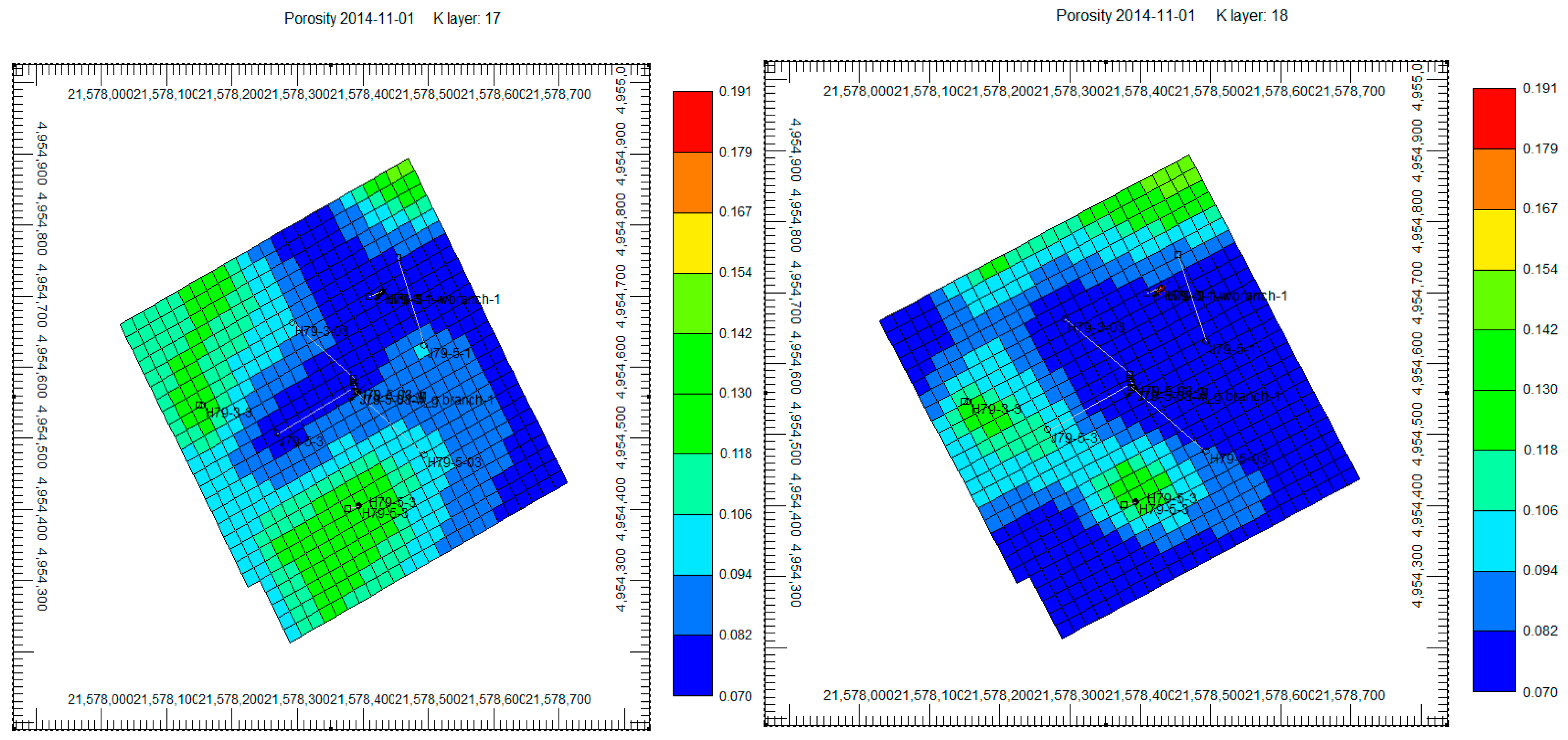
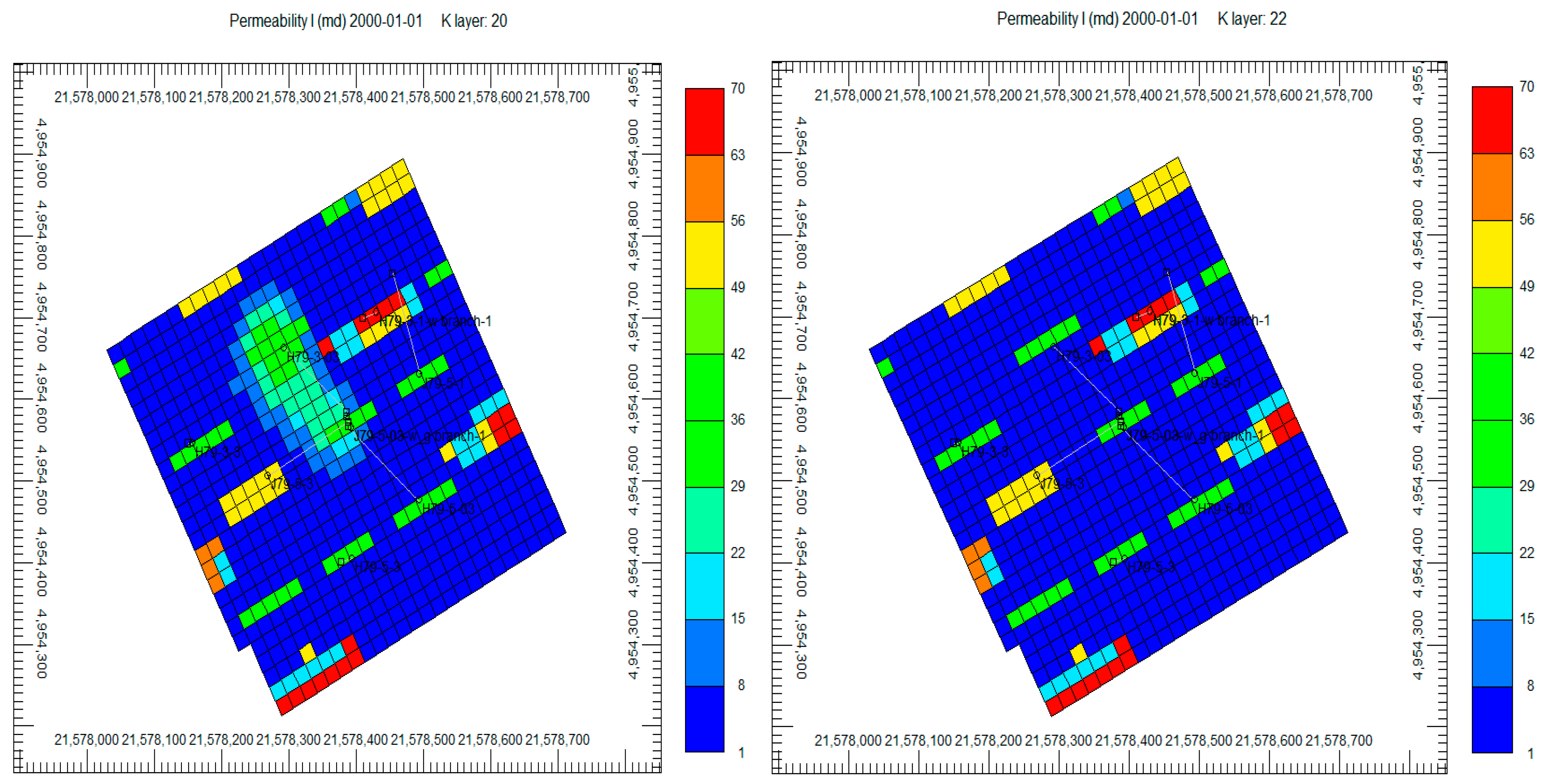
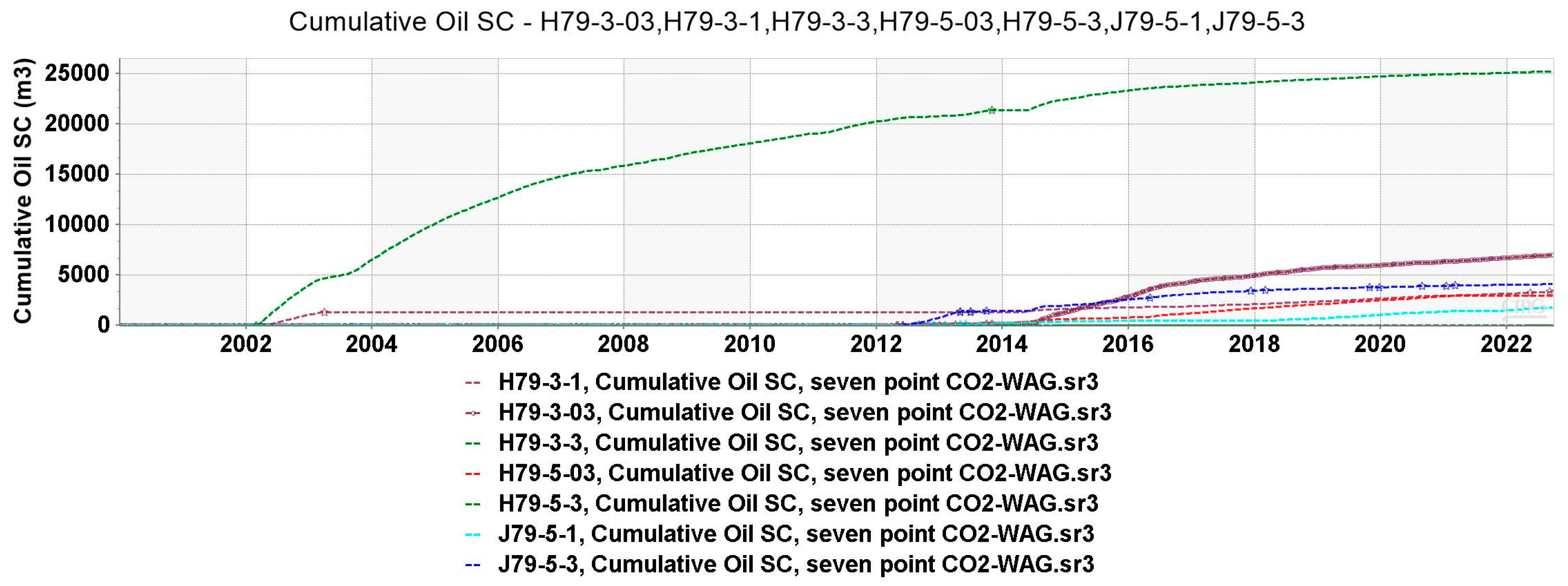
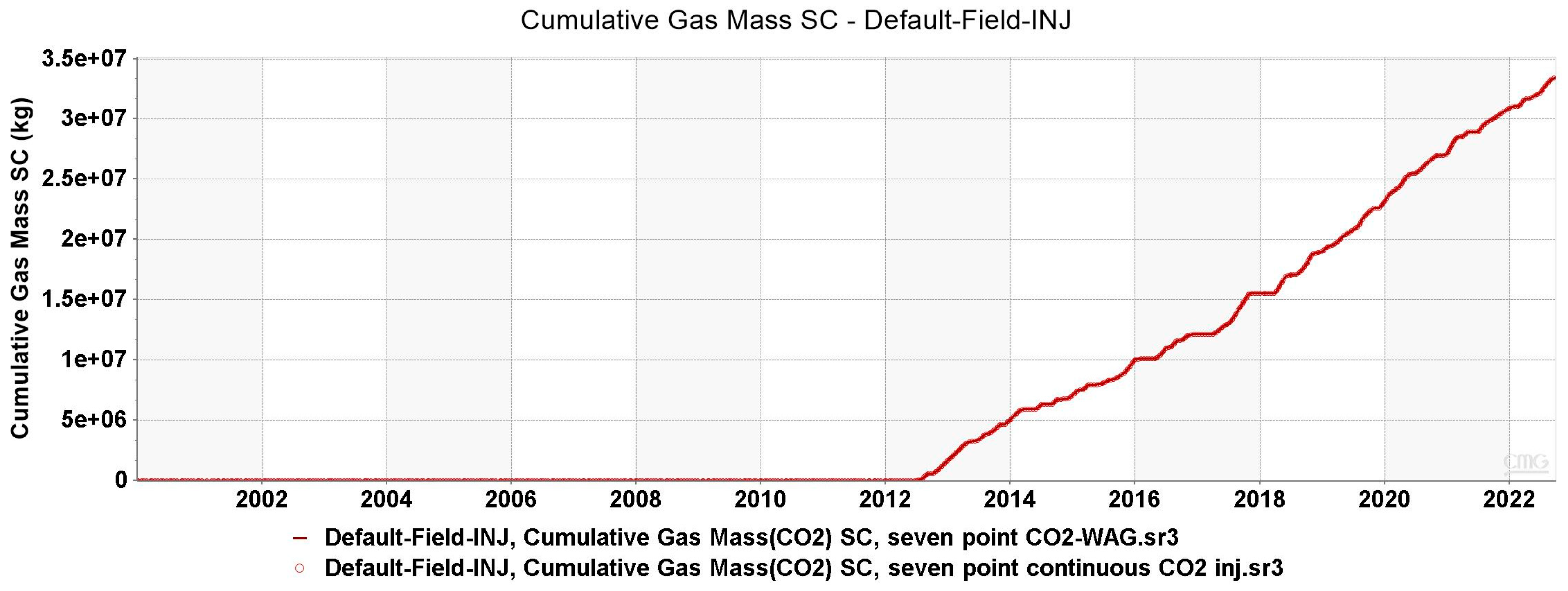
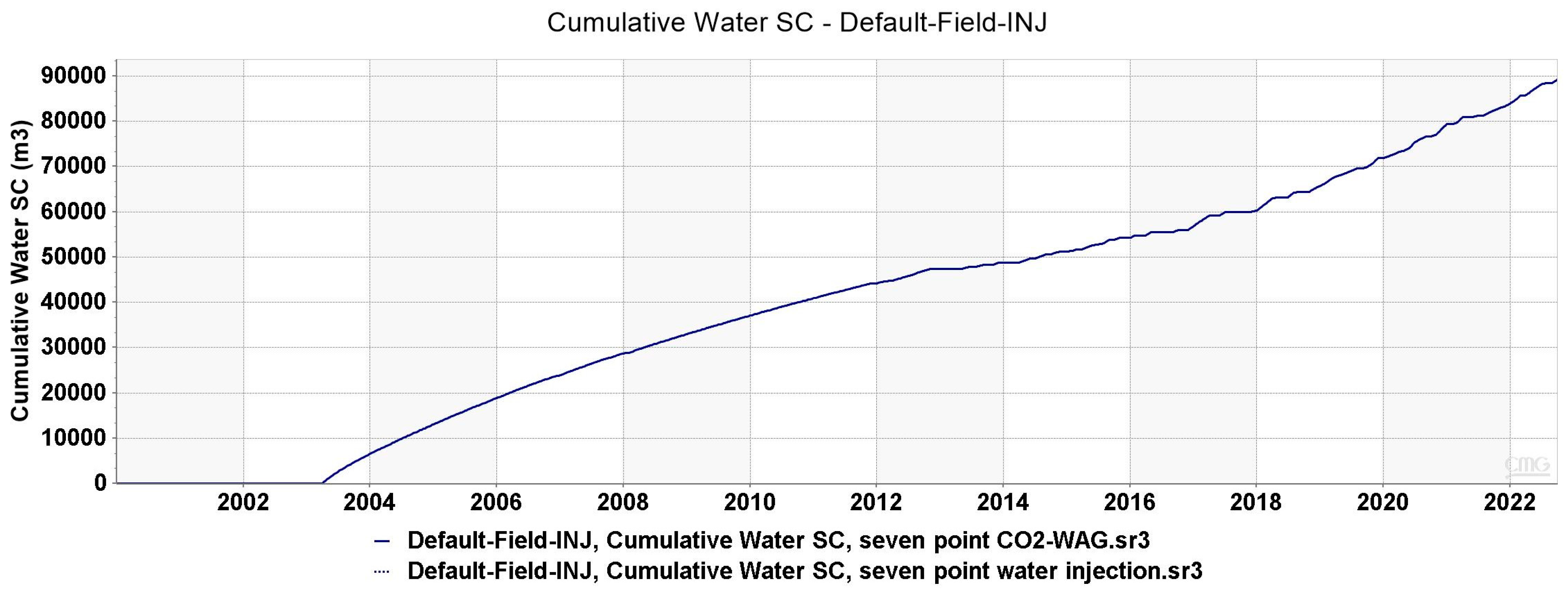

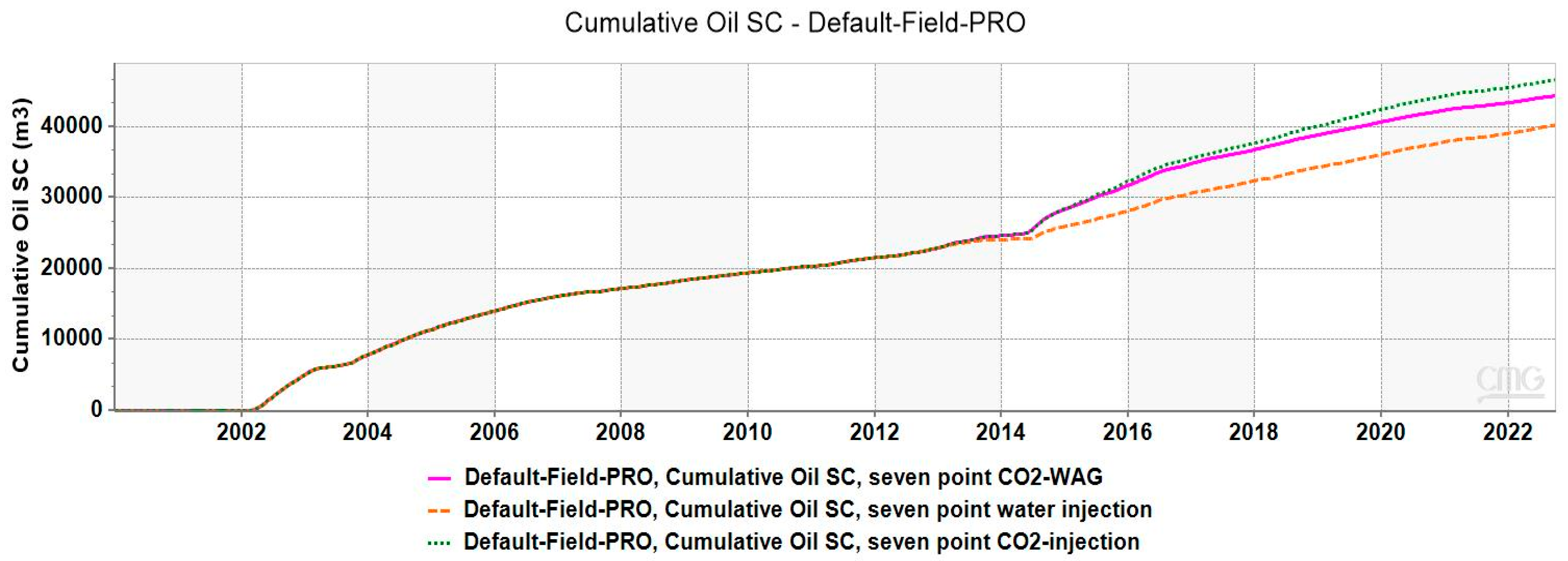
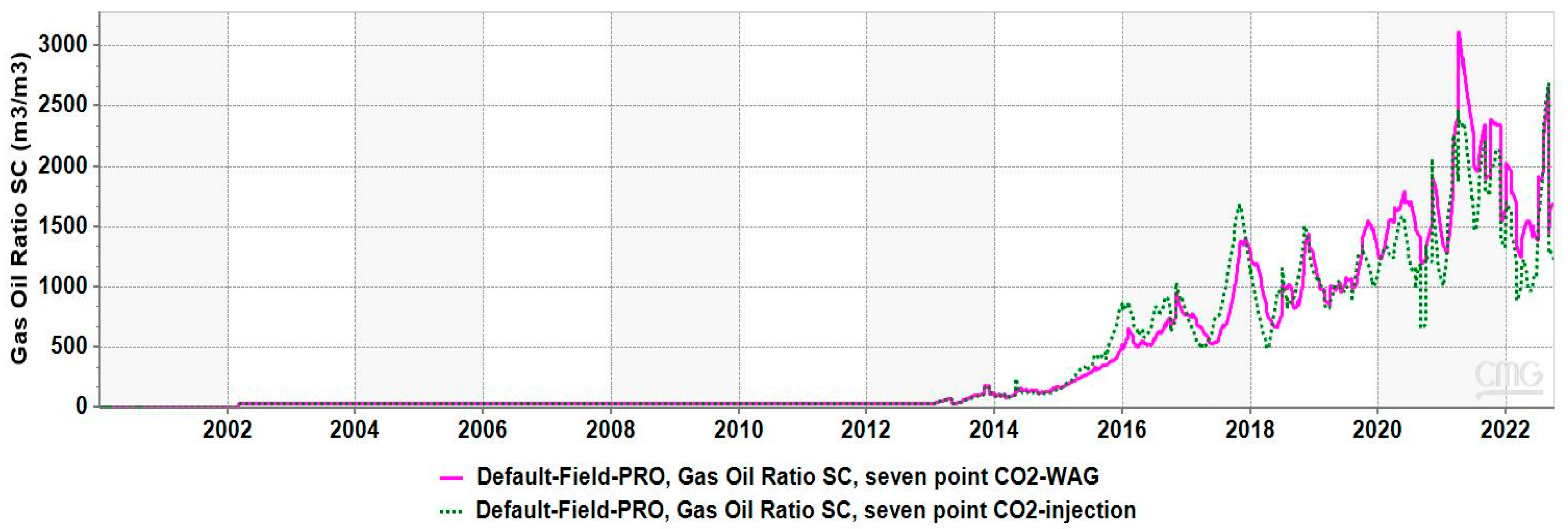






| Injection Methods | Water-Wet System | Mixed-Wet System |
|---|---|---|
| CO2-WAG | 26 | 16.1 |
| CO2 flooding | 27.2 | 17.2 |
| Water flooding | 23.6 | 12.4 |
Disclaimer/Publisher’s Note: The statements, opinions and data contained in all publications are solely those of the individual author(s) and contributor(s) and not of MDPI and/or the editor(s). MDPI and/or the editor(s) disclaim responsibility for any injury to people or property resulting from any ideas, methods, instructions or products referred to in the content. |
© 2025 by the authors. Licensee MDPI, Basel, Switzerland. This article is an open access article distributed under the terms and conditions of the Creative Commons Attribution (CC BY) license (https://creativecommons.org/licenses/by/4.0/).
Share and Cite
Hussain, M.; Boukadi, F.; Hu, Z.; Adjei, D. Optimizing Oil Recovery: A Sector Model Study of CO₂-Water-Alternating-Gas and Continuous Injection Technologies. Processes 2025, 13, 700. https://doi.org/10.3390/pr13030700
Hussain M, Boukadi F, Hu Z, Adjei D. Optimizing Oil Recovery: A Sector Model Study of CO₂-Water-Alternating-Gas and Continuous Injection Technologies. Processes. 2025; 13(3):700. https://doi.org/10.3390/pr13030700
Chicago/Turabian StyleHussain, Majid, Fathi Boukadi, Zeming Hu, and Derrick Adjei. 2025. "Optimizing Oil Recovery: A Sector Model Study of CO₂-Water-Alternating-Gas and Continuous Injection Technologies" Processes 13, no. 3: 700. https://doi.org/10.3390/pr13030700
APA StyleHussain, M., Boukadi, F., Hu, Z., & Adjei, D. (2025). Optimizing Oil Recovery: A Sector Model Study of CO₂-Water-Alternating-Gas and Continuous Injection Technologies. Processes, 13(3), 700. https://doi.org/10.3390/pr13030700







